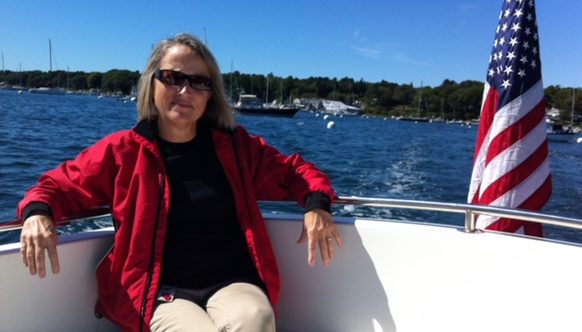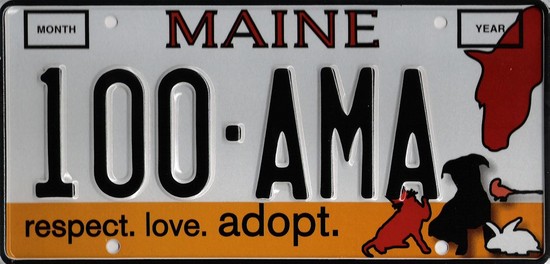Changemakers: Susan Hall, Spay Maine
“Expanding spay/neuter to the public’s cats resulted in a quick and drastic decline to feline intakes. The southern part of the state now has shelters that often have very few cats. This means we transport cats from shelters in other parts of the state that are still overwhelmed. We are approaching ‘no kill’ status!”—Susan Hall
 Susan Hall is co-founder of Spay Maine. A staunch advocate for animals and, specifically, managing cat populations to align with caring adopters, Susan and her colleague Sharon Secovich spearheaded the creation of Help Fix ME, a publicly funded, low-cost spay/neuter program, modeled after neighboring New Hampshire. The objective was to reduce feline euthanasia, and the results are impressive, with progress continuing. Her program has served as a model to other states. Susan previously assisted her husband Peter in his prior veterinary practice. She lives in Falmouth, Maine with Peter, now a successful optometrist. They have one cat, Milo, adopted from a shelter. Because he doesn’t do well with other cats, he enjoys all the devotion in the Hall household. In Maine’s beautiful summer season, Susan enjoys sailing. After an outing on Casco Bay, we caught up with her to share her story about Spay Maine.
Susan Hall is co-founder of Spay Maine. A staunch advocate for animals and, specifically, managing cat populations to align with caring adopters, Susan and her colleague Sharon Secovich spearheaded the creation of Help Fix ME, a publicly funded, low-cost spay/neuter program, modeled after neighboring New Hampshire. The objective was to reduce feline euthanasia, and the results are impressive, with progress continuing. Her program has served as a model to other states. Susan previously assisted her husband Peter in his prior veterinary practice. She lives in Falmouth, Maine with Peter, now a successful optometrist. They have one cat, Milo, adopted from a shelter. Because he doesn’t do well with other cats, he enjoys all the devotion in the Hall household. In Maine’s beautiful summer season, Susan enjoys sailing. After an outing on Casco Bay, we caught up with her to share her story about Spay Maine.
USA: Susan, please tell us about Spay Maine and Help Fix ME.

Spay Maine is a collaboration among Maine’s animal shelters, rescues, veterinarians, animal control officers, and animal welfare advocates who work together to reduce Maine’s shelter intakes and euthanasia. We do this by supporting Help Fix ME, which is Maine’s statewide public low-income spay/neuter program, and also by promoting spay/neuter clinics and programs around the state. As we’ll talk about today, Spay Maine has morphed since its inception, as our state’s needs have changed.
USA: Can you share a bit about how and why you started Spay Maine?
First, I’d like to say that early into this project, my colleague and longtime animal advocate Sharon Secovich joined me as the co-founder of Spay Maine. To do this project alone would be too overwhelming! We initially started Spay Maine to establish a state-run, state-funded spay/neuter program like New Hampshire’s. The sole reason was to reduce our feline euthanasia rates.
We accomplished this by mobilizing support from shelters, animal control officers, veterinarians, rescue groups, and individuals. However, over time, Spay Maine has morphed since we started it in 2000. We have had to return to the legislature several times to defend Help Fix ME’s funding from being cut. We also maintain a very basic referral website at www.spaymaine.org. We partner with Marian’s Dream to implement spay/neuter projects on the ground. So, you can see we have transformed from just establishing a program to being the defenders of the program, to being a referral organization and to being involved directly in spaying and neutering.
USA: When and why did you decide that a publicly funded program was needed in Maine?
Around 1998, I went to a spay/neuter conference hosted by Esther Mechler (President of Marian’s Dream) and sponsored by SpayUSA, the organization she had founded. The conference was very energizing. I heard attorney Peter Marsh from New Hampshire speak about New Hampshire’s state-funded, state-run low-income spay/neuter program. He talked about how their program was responsible for drastically reducing euthanasia rates in his state. At that time, Maine shelters were still euthanizing cats for space. (We did not then have then, and do not now have, a dog overpopulation problem in Maine. This is why the focus is cats.)
I thought, “Maine needs a program like that!” It took a couple of years before I decided to do anything about it. I kept hoping someone else or the shelters would take up the project, but nothing was happening. So, about two years after the conference, I decided to work towards copying New Hampshire’s program.
USA: What are the sources of funding for Help Fix ME, and what did you do to obtain and retain this income stream?

Help Fix ME has several funding sources. To get all these streams of income, we had to go before the state legislature, which required a massive commitment in time and energy.
- Major funding is obtained through a surcharge at the distributor level on pet food.
- There is a voluntary check-off on income tax forms, but income from this has been disappointing.
- A $25 surcharge on any cat or dog sold at a pet store if the animal sold is sexually intact.
- And a good income stream comes from sales of the animal welfare license plate.
USA: What have been the greatest challenges around this incredible accomplishment?
Having state funding is a wonderful source of income. You don’t have to apply for grants every year, and the funding is based on “animal sources,” meaning no income-tax money is used. This way, people don’t get upset that we are competing for scarce state funding against human programs. We have to keep reminding the public of this. That is a small challenge.
A huge challenge is the flip side of having this wonderful source of income. The challenge is when the legislature or a governor decides they want to eliminate our funding. When that happens, we have to mobilize our supporters and go to the state capital. This is always discouraging and an incredible amount of work.
Another huge challenge is the administration of the program itself. Since day one, whoever administered the program has been overwhelmed. It takes way too long for the state to issue vouchers, which can take 3 to 8 weeks — many times approaching the gestation period of a cat. This is unacceptable, and the state has been recalcitrant about working to streamline the process. Another problem is when a state worker quits this job; it can take months to fill the position, so there is “nobody minding the store,” or at best, a temporary worker.
USA: Any lessons learned?
If I had it to do over again, I’d make sure that it was written in the legislation that the funding be given to a private animal welfare organization that has shown a dedication to spay/neuter and has also demonstrated that they can efficiently issue vouchers. I would not have the voucher co-pay paid to the state, as that makes a huge paperwork problem. The co-pay would be paid directly to the veterinary hospital.
USA: What are you proudest of as you look back?
When I look back, I see that Sharon and I didn’t just start a program, we also raised awareness of the need for affordable spay/neuter if Maine wanted to succeed in lowering its feline euthanasia rates. We encouraged veterinarian Dr. Steve Kinney to partner with Greater Androscoggin Humane Society to start an in-shelter spay/neuter clinic that not only spayed and neutered the shelter’s animals, but also expanded to the public’s cats. Expanding spay/neuter to the public’s cats resulted in a quick and drastic decline to the shelter’s feline intakes.
Two other shelters followed suit and opened clinics, a large spay/neuter clinic with transport opened up, and grantmakers started giving grants to help lower cat overpopulation. It is almost like there was a snowball effect! The southern part of the state now has shelters that often have very few cats. This means we transport cats from shelters in other parts of the state that are still overwhelmed. We are approaching true “no kill” status!
* * *
Spay Maine is online at spaymaine.org.

